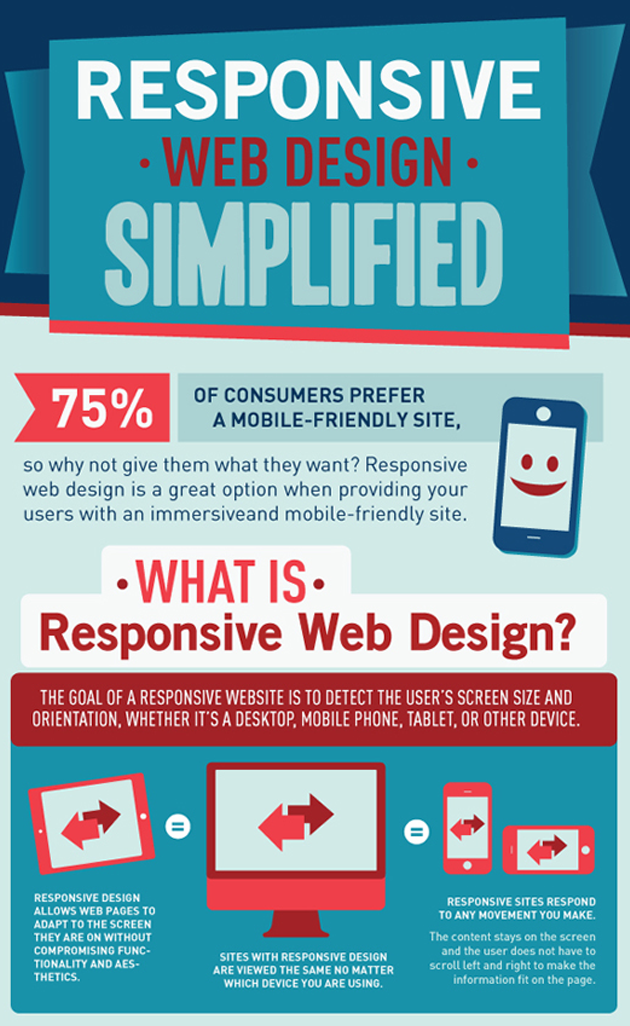Essential Aspects Of Web Design: Standards For Creating A User-Centric Site
Essential Aspects Of Web Design: Standards For Creating A User-Centric Site
Blog Article
Write-Up By-Abildtrup Gammelgaard
When it involves internet site style, making sure user-friendliness is key. From receptive style to structured navigating, every aspect plays an important function in developing a site that deals with your audience's demands. However what about the better details that can make or break a customer's searching experience? Remain tuned as we reveal some often-overlooked suggestions that can elevate your website's usability to the following degree, making it truly stick out in the electronic landscape.
Value of Responsive Design
Receptive design is a crucial facet of modern-day web site development. Guaranteeing your site is receptive methods that it can adapt to different display dimensions and tools, providing a smooth experience for users.
With the boosting use smart devices and tablet computers to access the net, having a receptive style is essential for reaching a broader audience. It assists in boosting user experience by making your internet site easy to navigate and keep reading any kind of tool.
Additionally, website content development can favorably affect your search engine rankings, as online search engine like Google focus on mobile-friendly sites. By having a receptive design, you're additionally future-proofing your internet site, as new gadgets with differing screen sizes continue to arise.
Simplify Navigation Structure
To boost customer experience and assist in very easy access to details on your web site, simplifying the navigation framework is critical. When creating your site, focus on creating a clear and instinctive navigating menu that assists visitors discover what they're trying to find swiftly.
Limit the number of menu things to the fundamentals, organizing related web pages together to prevent overwhelming users. Usage descriptive tags that plainly indicate the web content of each web page, making it much easier for customers to understand where each web link will certainly take them.
Consider implementing dropdown food selections for subcategories to prevent littering the primary navigating bar. In onsite optimisation , include a search bar prominently on the page for users who like looking for specific details.
Focus on mobile responsiveness in your navigation layout to ensure very easy gain access to on all devices.
Maximize Web Page Lots Speed
Improving web page tons speed is important for keeping visitors on your internet site. Slow-loading web pages discourage users and can bring about high bounce prices. To optimize page lots rate, begin by enhancing pictures. Press pictures without compromising quality to minimize their data dimensions.
Furthermore, make https://www.cmswire.com/digital-marketing/is-too-much-data-hurting-your-marketing-strategy-heres-what-experts-say/ for browser caching to save frequently accessed sources locally, accelerating tons times for returning visitors. Minify CSS, JavaScript, and HTML documents by getting rid of unneeded characters, remarks, and format, boosting load rate.
Take into consideration utilizing a content shipment network (CDN) to disperse your web site's content throughout numerous servers worldwide, reducing latency for customers accessing your website from different areas. Finally, restrict making use of third-party manuscripts and plugins, as they can substantially influence tons times.
Conclusion
Finally, by incorporating receptive design, streamlining navigating, and optimizing web page tons speed, you can develop an user-friendly site that appeals to a wider audience and improves user experience. These essential elements make sure that site visitors can easily accessibility and navigate your website across various devices, resulting in raised engagement and fulfillment. By focusing on these vital aspects, you can build a successful website that keeps individuals coming back for more.
